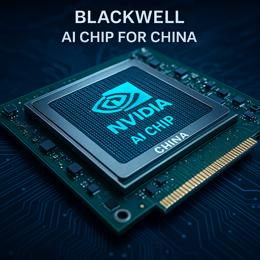Image created by AI
The Emergence of Open-Source AI as a Foil to Silicon Valley's Goliaths
As the digital age advances, the duel between David and Goliath is reenacted within the tech industry. Open-source AI has emerged as a beacon for democratization, challenging Silicon Valley’s stronghold led by industry titans. The launch of foundation models like ChatGPT sparked a tech race that quickly saw Microsoft’s acquisition of Inflection, signaling an era significantly defined by AI.
Despite the excitement, foundation models have their share of problems. The staggering costs and rapid depreciation observed by Atreides Management’s Gavin Baker highlight the challenges facing AI companies like Anthropic and Character.ai. Although ChatGPT’s subscription-based revenue has defied the trend, the rest could find themselves entangled in similar predicaments to Inflection.
This has created an opportune environment for Big Tech companies to capitalize on emerging AI startups either through absorption of talent or strategic investments, such as Amazon's substantial funding of Anthropic. These maneuvers further cement an unnervingly concentrated power structure over the AI landscape, leading to major AI design decisions taking place behind the opaque curtains of corporate boardrooms.
Enter open-source AI, a paradigm representing transparency and accessibility. Unlike OpenAI, which keeps ChatGPT's mechanics proprietary, open-source champions like Mistral and Hugging Face are reshaping the field. xAI's announcement of open-sourcing their chatbot Grok signifies this growing trend that empowers not only tech innovators but also society at large.
France, with its rich tradition of egalité and mathematical prowess, has become a crucible of this resistance to closed AI systems, with companies like Mistral and Hugging Face disrupting the scene. They offer free AI models, fueling a democratization that lowers entry barriers for entrepreneurs and fosters innovation. While Mistral indulges in a partnership with Microsoft for its advanced models, it also shares other developments freely via torrent sites. Hugging Face strides ahead by constructing a hub of open-source AI resources, funding their endeavors through enterprise-level services.
The essence of open-source generative AI lies in its ability to offer companies the components to build or integrate chatbots without being tethered to tech giants. The argument is not only economic but fundamentally innovative, providing the means for entrepreneurs to dissect, understand, and customize AI to their unique visions, propelling innovation beyond consumption.
Despite the optimistic outlook, skepticism lingers, with some foreseeing an inevitable closing of these once open systems. The internet's transformation from an open network to a landscape dominated by walled gardens echoes these concerns. However, open-source remains deeply anchored in IT infrastructure — a fact underscored by the prevalence of Linux and Ubuntu in data centers and a Synopsys report which identifies a significant portion of codebases as open-source.
This trend's sustenance is championed by those like Remi Cadene of Hugging Face, who sees open-source AI as pivotal in dissipating fears related to AI, fostering a broader understanding and engagement. The potential for open-source AI to not only match but surpass closed systems lies in its community-driven approach to innovation, safety, and improvement.
Ultimately, Silicon Valley's narrative of inevitability is being questioned. Should the open-source movement persist, we might witness an industry that maintains the progressive spirit of its inception, where innovation and accessibility are not mutually exclusive but fundamental to our technological evolution.










